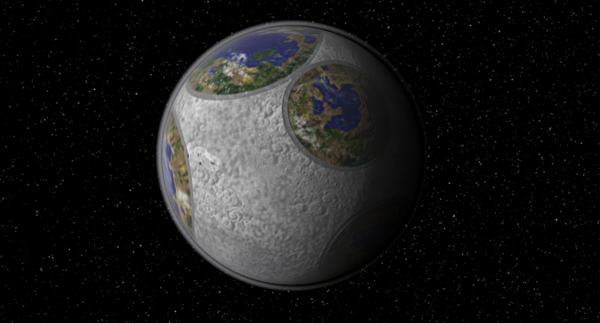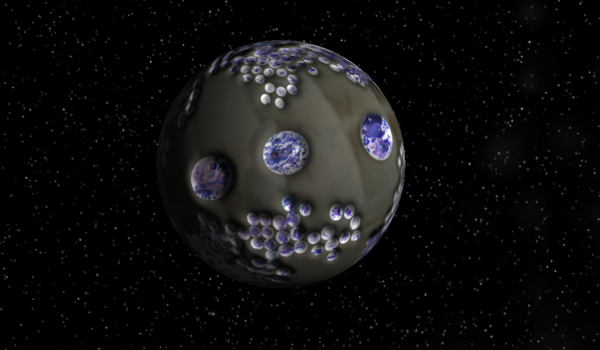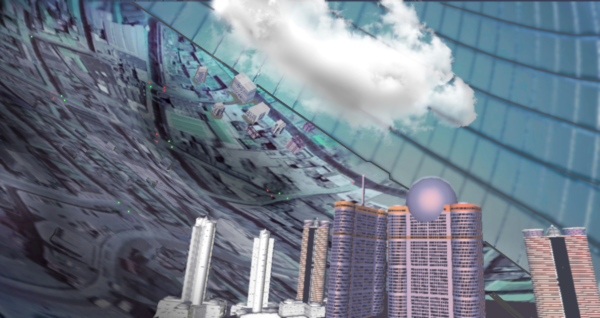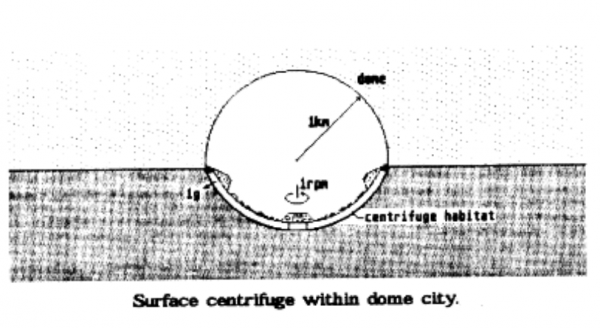BY LETTER
Dimple Worlds and Rotacities
Worlds and habitats where only part of the surface has been terraformed | |
 Image from Steve Bowers | |
| Galrecon is a large rocky world with several covered dimple habitats on the surface, and a similar number of artificial subsurface caverns, which are also inhabited | |
Worlds where only part of the surface has been terraformed. Most dimple worlds utilise artificial excavations or deliberate depressions in artificial surfaces, although some utilise natural features.
The earliest form of dimple world developed from low world houses built at the bottom of deep craters; some of these worldhouses were eventually extended to cover the whole planet or moon, until the world was completely paraterraformed. Other worlds have remained as separate dimples even in the current era. Not all natural crater-worlds have world-roofs, as some natural canyons and craters are deep enough to retain a dense atmosphere even though the datum surface level is at a much lower pressure. In many cases the edges of these natural depressions have been raised to reduce atmospheric losses or the floor of the depression is excavated further.
 Image from Steve Bowers | |
| Tien-Hsin Dimple World, a supramundane shell suspended over a Neptune-sized world in the MPA Middle Regions. Several deep dimples have been terraformed on the surface of this world, some of which share atmospheres, while others do not. | |
 Image from Steve Bowers | |
| Pluton, a dimple world in Perseus | |
The world Pluton is an example of a dimple world that has been extended right around the equator of a world; the rest of the planet is inhabited by cold-loving Muuh.
Rotacities
Crater-habitats on low-gravity worlds are sometimes configured to rotate in order to provide centrifugal gravity at the rim; these are often urbanised and known as rotacities. Clades that find low gravity problematic are often found living in these structures, especially around the edge where the gravity is strongest. Image from Steve Bowers | |
| A rotacity. These habitats are built inside craters or crater-shaped dimples or excavations. A rotating shell inside the crater gives various amounts of centrifugal gravity, ranging from zero at the centre to a maximum at the rim. This centrifugal gravity is (of course) additional to the natural gravity of the planet, moon or asteroid upon which the rotacity is constructed. | |
Related Articles
Appears in Topics
Development Notes
Text by Steve Bowers
Initially published on 23 February 2015.
Initially published on 23 February 2015.
Additional Information
External YouTube video by Ken York showing a Rotacity in Action







